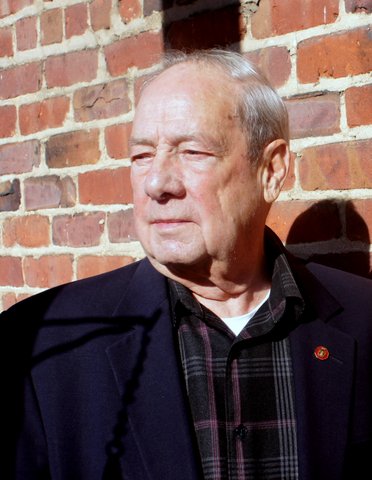
Hugh C. Miller. FAIA, FAPT, a 28-year veteran of the National Park Service served as the Service’s 2nd Chief Historical Architect between 1979 and 1988. During that tenure, he was Executive Architect for the restoration of the Statue of Liberty and Ellis Island and principal steward of the many nationally-significant historic buildings and landscapes in the Service’s care. Throughout his career, Miller was a leading voice for the “professionalization” of Service
Born in Lancaster, Pennsylvania, as a son of a corporate gypsy, Hugh Miller lived in eleven houses in four states by the time he was twelve. He received a Bachelor’s Degree in Architecture from the University of Pennsylvania. He then served as Unit Commander, 94th Engineer Battalion (Construction), in the U.S. Army, stationed in Germany and France. Returning to the States, he worked in private architectural practice in Philadelphia and Wilmington, Delaware, before joining the National Park Service in 1960. He worked in the Service’s Eastern Office of Design and Construction until 1966. He then became supervisory architect/ planner for the NPS/USAID planning team stationed in Jordan and Turkey. Starting in 1971 he served as Assistant NPS Chief Historical Architect in Washington, DC until assuming the Chief Historical Architect position in February of 1979.
Throughout his professional career, Miller advocated for America’s and the Service’s role in the international community of heritage conservation and historic preservation. For five years, he served as advisor for cultural tourism and the development of park systems and the preservation of cultural properties in Jordan and Turkey. He undertook or participated in special studies of cultural properties in Lebanon, Greece, Iran, Singapore, Macau, Mexico, and Great Britain. He is a member of the International Council of Monuments and Sites (ICOMOS) and was made a fellow in 1995.
Miller was, and remains, a leading national and international voice for the science- and research-based investigation, maintenance, and restoration of historic buildings. Hugh Miller has been a member of APT International since 1972, a Director of their Board (1974-1981), and founder and past president of its Foundation for Preservation Technology. He currently serves on the APT Technical Committee on Sustainable Preservation. In 1998, he was made a Fellow of APT and presented with the organization’s highest honor – the Harley J. McKee Award for Lifetime Achievement. Hugh Miller is also widely recognized nationally as a founding leader in identifying, recording, and conserving what today are identified cultural or living landscapes – a recognition of the inter-connectedness of history, historic place, land use, and the natural environment and how each affected the other.
After retirement from the Service in 1988, Miller served as first Director of the Virginia Department of Historic Resources and as Virginia State Historic Preservation Officer (1989-1994). He was an Adjunct Professor in the Goucher College’s Master’s Program in Historic Preservation(1964-2016) , instructing in historic building technology and directing the graduate thesis program. As NPS Chief Historical Architect or in retirement Miller influenced countless projects affecting historic places outside the NPS System including Philadelphia City Hall, the Amana Colonies (Iowa), the Fan Historic District (Richmond, VA), the Octagon and Calwell-Abbe Houses in Washington, DC, and, in the Commonwealth of Virginia -Stratford Hall, Menokin, Thomas Jefferson’s Poplar Forest, Monticello, and the Academical Village of the University of Virginia.
In 1952, Hugh married the former Stella Hawkins. Together they have three children, four grandchildren, and two great grandchildren. Stella died 1 June 2016.
Hugh Miller lives in the Fan Historic District of Richmond, Virginia, lectures frequently nationwide on such wide-ranging topics as sustainability and historic preservation and heritage landscapes, serves on innumerable advisory boards, and continues to be an important figure in national and international heritage preservation professional practice.
Where did you go to college?
The University of Pennsylvania, School of Fine Arts, now School of Design
Would you recommend studying architecture to a young person?
YES
What does it take to be an architect?
Imagination and attention to detail…Problem solving…designable, buildable, maintainable.
Was there an architect that particularly inspired you?
Buckminster Fuller. The
What are you currently reading?
Toward A Simpler Way Of Life The Arts & Crafts architects of California
What’s the best meal you’ve ever had?
Any filet mignon cooked rare by my wife Stella.
Why do you volunteer with the AIA?
To meet other architects and work on interesting projects and programs. First with AIA HRC in the 1970s.
